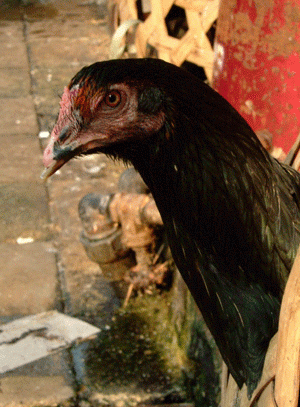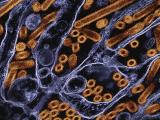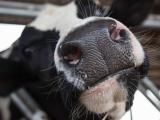Jan 11, 2007 (CIDRAP News) – An uptick in human cases of H5N1 avian influenza is focusing attention on the unsolved problem of crafting influenza-prevention messages that developing-world farmers—the group at highest risk for the disease—will trust and follow.
New research into avian flu prevention in Cambodia, one of the virus's past hot spots, underlines the difficulty, reporting that villagers did not take preventive action even when they knew what to do to protect themselves.
The persistent mismatch between knowledge and action has researchers wondering whether blanket bans on handling and slaughtering sick poultry are impractical—and whether the effort to keep the disease out of humans should instead adopt a "risk-reduction" model that applauds small positive steps.
This week the World Health Organization (WHO) announced two new human cases of H5N1 flu in Indonesia, the country's first in six weeks. On Dec 27, the WHO reported a cluster of three deaths—a 15-year-old girl, a 26-year-old man, and a 30-year-old woman—in a family in Egypt, 8 weeks after the last previous case there. (Yesterday the WHO also reported a case in a Chinese farmer, China's first case since July.)
Health officials in Indonesia and Egypt said the latest victims were probably infected by sick poultry or ducks. Both countries have run public education campaigns about the risk of acquiring bird flu. The victims were aware of the education efforts, the ministries said; they first denied, and then admitted, handling or slaughtering the birds.
The oldest of the three Egyptian victims "was frightened of admitting she had been rearing ducks at home," Hamdi Abdul Wahad of Egypt's Health Ministry said in remarks carried by IRIN News, a United Nations agency. "This indicates she knew of the risk, but did not appreciate the extent of the danger."
Cambodian study shows paradox
The gap between knowing what to do and doing it is spotlighted by a dispatch in the January edition of Emerging Infectious Diseases, a journal published by the US Centers for Disease Control and Prevention. The paper—written by scientists from the Pasteur Institute in Phnom Penh, Cambodia, the London School of Hygiene and Tropical Medicine, and Cambodian and UN agencies—reports the results of a "knowledge, attitudes and practices" survey of 460 Cambodian villagers in two provinces judged to be at high risk for H5N1 flu.
Cambodia recorded its first H5N1 outbreaks in poultry in 2004. It had four human cases in 2005 and two last year; all six victims died.
Ninety-seven percent of the 269 households where the villagers lived kept chickens, while 39 percent also raised ducks. And 81% of the households had learned about avian flu and flu prevention from announcements on television; 78% had heard similar messages on the radio.
Those messages had penetrated: 72% of the participants understood that avian flu is a fatal disease that can be transmitted to humans, 67% thought it was unsafe to touch sick or dead poultry with their bare hands, and 70% knew it was not safe to eat wild birds. Those risks were not theoretical: Poultry had died in 62% of the households in the previous 6 months.
Nevertheless, large proportions of the villagers admitted doing things they had been cautioned against. Seventy-five percent acknowledged touching sick or dead poultry bare-handed; 45% ate poultry that had died from illness; 33% ate wild birds; and 8% collected and ate dead wild birds.
In addition, though half of the participants agreed on the importance of reporting poultry deaths to authorities, many did not report—41% because they did not know how, 31% because they had not done so in the past, and 18% because they believed it would hurt sales of their surviving birds.
"These findings provide evidence that high awareness does not necessarily lead to behavior change," the researchers said with significant understatement.
Several factors contributed to the mismatch between message and execution, they added. Villagers who did not follow safe practices nevertheless had not gotten sick, leading others—including family members of H5N1 patients—to conclude that eating sick and dead poultry was worth the risk. Equipment that could protect them during handling and slaughtering (rubber gloves and masks, and also soap) is hard to obtain. And farmers whose flocks are culled as a protective measure receive no compensation from the government, unlike what is done in neighboring Thailand and Vietnam.
"Intervention programs must include feasible options for resource-poor settings . . . and must offer farmers alternative methods to safely work with poultry on a daily basis," the authors conclude.
Alternative persuasion tactics
The divide between developing-world villagers' avian-flu beliefs and practices is familiar and frustrating territory to groups that work on flu control.
"It is not enough just to tell people what to do; we have known that for a long time," said Silvio Waisbord, senior program officer at the nonprofit Academy for Educational Development (AED), based in Washington, DC, which conducts avian-flu programs in Southeast Asia and Africa.
"Even though people are told not to do something, if they see people around them not complying with that message, and there are no damaging consequences, it is unlikely they will go along with the promoted behavior," he added.
Some avian-flu prevention programs, including AED's, improve their success when they choose locally trusted sources, such as Vietnam and Laos's powerful Women's Unions, to deliver flu-control messages. In addition, "We try to ask what the motivation is—why people will do this," Waisbord said. "Technical messages may not work, but 'Do it for your family,' or 'Protect your birds so you will have them for religious festivals,' those messages resonate with people's existing concerns."
Economic incentives such as payments in exchange for preventively slaughtered birds can be a powerful persuader—so important that the World Bank, in a report on compensation issued in early December, recommended that it be paid directly to farmers in cash within 24 hours of a cull.
"Reporting, not selling and eating sick poultry, fencing birds, all have economic disincentives that have not been adequately addressed yet," said Whitney Pyles, avian influenza coordinator for CARE International, which is conducting community-based flu control programs in Southeast Asia.
Lessons from HIV prevention
Recently, staff at some nonprofit organizations that work on avian flu have been comparing efforts against the disease to campaigns against HIV/AIDS. Early on it became clear that blanket prohibitions on behaviors that transmit HIV would never conquer human nature, but campaigns that encouraged incremental protective steps had a chance of success. (One, the ABC campaign—from its slogan"Be Abstinent, Be faithful, use a Condom"—is credited with contributing to a sharp drop in AIDS incidence in Uganda, previously one of the hardest-hit countries in the world.)
That risk-reduction model, advocates argue, may have a better chance of controlling avian flu than broad prohibitions that effectively order villagers to sacrifice important sources of protein and income.
CARE has seen some openness to a step-wise approach among villagers in its programs, Pyles said: "Recent findings from our studies in Vietnam and Cambodia demonstrated that people were more likely to change behaviors around hand-washing and handling dead birds, rather than activities that had an economic disincentive, such as building a cage or fence or reporting outbreaks."
She added: "We don't have to achieve a perfect record of individual behavior change in order to prevent or stall a pandemic. What you do need is a critical mass of behavior change that results in reduced human cases."
The essential component, she said, is turning out to be community participation. Protective behaviors that are discussed and agreed to by a community have better adherence than solutions imposed from above by national health authorities. In a CARE program in central Vietnam, those behaviors include agreements to improve rates of hand-washing and safe food preparation.
"There has to be mechanism for communities to weigh in on and make decisions about what will happen to them," she said. "Participation gets better results than draconian enforcement. I think we will find local participation in decision-making will end up being the gold standard in controlling avian influenza."
See also:
Emerging Infectious Diseases report on study in Cambodia
http://www.cdc.gov/ncidod/eid/13/1/130.htm
World Bank report on compensation of farmers for culled poultry
http://siteresources.worldbank.org/INTARD/Resources/HPAI_Compensation_Final.pdf






















